Opinion
New govt. to fast-track export-led growth strategy
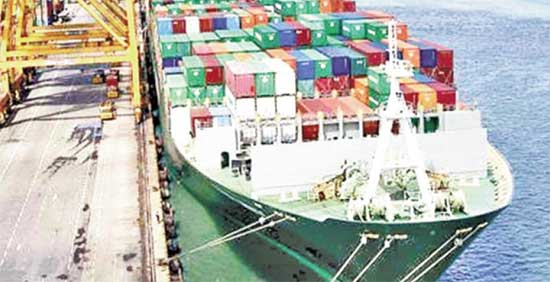
By Jayampathy Molligoda
It is common knowledge that Sri Lanka never had a consistent export -led growth strategy. For decades, it has become a buzz word without having a proper infrastructure- both physical as well as soft skill- and much needed foreign and domestic investments. With frequent change of governments, export strategies have been changed and no determined efforts made to promote potential export products, marketing destinations and reap the benefits of positives of globalisation to link up with the global value chain (GVC).
Implement truly export led growth strategy:
It is recommended to appoint a high powered ‘economic advisory committee’ under the Presidential secretariat, comprising key officials of the government, drawn from the Treasury, Central Bank and other relevant institutions, together with a team of experts from private sector thus sharing the same vision and ideology of the new government.
It is suggested that the above mentioned economic advisory committee should pick up acceptable proposals without scrapping the already prepared export strategy and give leadership to effectively implement and monitor same through an efficient economic task force. Whilst supporting traditional exports, time is opportune to concentrate simultaneously for a diversified export portfolio such as newer exportable products as technology-based components, raw materials for chemical industries, bunkering product etc. As far as export of services are concerned, train and upgrade skills of Sri Lanka’s human resource at professional levels, such as nursing and health care services, technology-based services, skilled armed services, maritime and navel services, BPO ICT, etc. This will eventually minimise over- dependence of migrating unskilled labour to the Middle East thus creating unnecessary social issues to their families, children and society at large.
Strictly enforce much needed
fiscal discipline:
The already widened fiscal deficit has been further deteriorated by the recently announced relief measures to meet the COVID-19 packages by the government. Nevertheless, the forthcoming Budget should reflect further austerity measures. It is essential that budgetary allocations are restricted on foreign travel for non-essential purposes for some time and save foreign exchange. Current expenditure should be reviewed regularly and prioritize expenses until such time the economy gets back on track. As for state owned institutions, detailed action plans along with winning strategies should be implemented to minimize losses.
More transparent and equitable pricing formulas will have to be introduced for public goods. Purchase of paddy stocks by the government should be at a reasonable minimum price that covers the farmers cost of production and some element of profit. In order to determine price payable to paddy farmers, it is suggested to introduce a similar scheme such as a reasonable price payable to tea small holders under the Tea Control Act of 1957 as amended, could be used thus stemming from the retail price of rice varieties at the market.
Underprivileged, needy communities can be given subsidies. Indian method of transferring subsidies to underprivileged and bypassing the middlemen through banking system using ‘Aadhar programme’ should be studied and must be adapted to suit Sri Lanka. It is essential to prevent leakages of subsidy as it amounts to a huge drain to the treasury financing.
Link strategy to develop SMEs to global value chain:
It is of paramount importance that the government must revisit and re-activate the financial and banking system loan schemes and provide more wholistic assistance to SME’s, establish SME centres and to provide the necessary guidance and support services which include the following areas;
=Start a programme to promote SME exports linking with global value chain (Select 500 SMEs and support for export as quick starter)
=Engage with DFI’s who have done similar projects – IFC, ADB, JICA
=Encourage SME sector to move up in the value chain
=Give incentives for Sri Lankan expatriate with business ideas to come to Sri Lanka to set up enterprises
=Incentivize setting up of venture capital and Private Equity businesses to support these ideas
=Help Sri Lankan SMEs to find joint venture partners for technology transfer. Set up a fund to support research and Development in SME sector
=Create incubators close to- may be universities to encourage setting up of businesses.
=Restructure banking sector and have a separate window for SMEs in the designated banks.
Re-visit existing subsidies
including fertiliser:
As for fertiliser subsidy scheme, time is opportune to revise same to mitigate negative effects of such schemes. If the present subsidy scheme continues, the Government may not be able to achieve its production targets in the agricultural sub- sectors and the farmers will continue to criticize the Government’s policy implementation. Special cultivation calendar shall be introduced based on resource availability in each Agro- Ecological Zone (AEZ). Improve infrastructure facilities such as laboratories, consultation services, extension on recommending site specific fertilizer application. The strategy should be to export high variety crops in addition to maintain food security and replace unnecessary imported food items.
The government needs to ensure that fertilizer is available to the farmers at the correct time and at a revised level of subsidized price where ‘large-scale estate’ owners also get subsidized fertilizer. We need to educate farmers on the proper usage of fertilizer to suit the soil conditions, minimizing wastage and environmental damage. It goes without saying that the system must provide the optimum quantity of fertilizer at reasonable price in time. It is important to identify farm level factors that influence the adoption of straight fertilizers and it would help in promoting the use of straight fertilizers at the farm level. More investment on R&D as well as private sector involvement are needed for manufacture of fertilizers using locally available raw materials.
The following additional points are also recommended:
a. Oligopoly of present fertilizer importers should be taken away and the government should encourage small- scale importers/farmers/RPCs to enter in to the market to import or produce locally. This will resolve issues related to malpractices, fertilizer availability, etc.
b. There shall be no subsidy given to importers, however a ‘ceiling price’ based on the market rate of fertilizer as determined could be fixed taking into account the CIF price of importers. The Subsidy, being the difference between the ceiling price and the subsidized rate, should be given only to the selected beneficiaries and be paid in cash to their bank accounts.
c. Fertilizer will then be freely available in the market and the selling price could be monitored by the relevant agencies and if there is a requirement of controlling the fertilizer prices at the market, then the ‘ceiling price’ could be used by the government. The present subsidized rate should be increased from – Zero for paddy and/or Rs. 10,000 per metric ton (MT) to say, Rs 12,500 and for other crops, the fertilizer mixtures could be increased from the present Rs. 23,000 to say Rs 35,000/ per MT.
d. Government shall encourage farmers (higher subsidy) for “Site Specific Fertilizer Usage and Organic Fertilizer” and required technology shall be given through crop research institutions. Subsidy should be given only for Urea, MOP, TSP and SA. Subsidy on all other straight fertilizers/mixtures should be removed and encouraged to use only where necessary.
e. It is necessary to clear the outstanding subsidy payments to the suppliers of fertilizer by the treasury leaving no room for ‘blame assigning’ by the private sector.
This will enable the government to reduce the burden on the treasury for additional government expenditure on subsidy (at present Rs 50 Billion per annum) at least by 30%.
(1) Invite FDI under the Chinese led “Belt and Road Initiative” (BRI):
To increase foreign exchange earnings, it is important to enhance port and port services by expediting the already planned development activities. The new Government has already approved the installing three gantry cranes to the JCT and the contract to deepen the JC. There is nothing wrong in entering into JVs based on ‘PPP models’ as articulated under the agreement between the GOSL and ADB on Colombo break-water financing. Geo-political realities and the popular public sentiments on the concept of nationalism should not be construed as strictures for decision making ability for economic growth and the writer is confident the next government under the leadership of President Gotabaya Rajapaksa is capable of maintaining a balance between the two in order to fast track economic growth activities.
It is essential to resort to a full-scale effective drive towards getting FDIs for long term projects in a transparent manner and such FDIs should be used only for revenue yielding projects from which, at least part of the borrowing can be met. It will be useful to revert to the marine and maritime activities and Aviation hub concept and ensure that appropriate projects are listed under these two hubs as early as possible and invite FDI under the Chinese led “Belt and Road Initiative” (BRI) and also link up with the ASEAN supply chain trough BRI as Sri Lanka is not a member of the ASEAN.
Conclusion:
Sri Lanka has already demonstrated its ability to combat COVID-19 successfully and the need of the hour is to fast track domestic economic activities, thus enabling Sri Lanka to record a faster recovery than other countries to improve economic growth. A more pragmatic nationalistic ideology – socialist oriented market based economic development model, coupled with an Executive Presidential system of governance would be more suitable to implement inclusive economic development programme to improve quality of life of the people of this country.
(Writer acknowledges the contribution made by Dr Ranee Jayamaha and Mrs Thusitha Molligoda)
Opinion
Learning from global models to address flooding and water shortage in Sri Lanka

by Sudharman Siripala
Sri Lanka is grappling with the increasing threat of climate change, which has led to unpredictable weather patterns. The country faces a dangerous combination of flooding in some regions and water shortages in others, a situation exacerbated by shifting rainfall patterns. Rivers originating in the Central Hills, such as the Mahaweli, Kalu, and Kelani, flow through much of the country, but these water sources are not being distributed evenly. Districts like Monaragala and Hambantota, located in the dry zone, are experiencing severe water shortages. To address this challenge, experts suggest the development of an interconnected river system to harness excess water during floods and redirect it to drier areas, ensuring a year-round water supply for agriculture and daily use.
Global Case Studies in River Management
Several countries facing similar water-related challenges have implemented successful water management systems that Sri Lanka could adapt to its unique circumstances:
The Netherlands – Room for the River Programme
The Netherlands, a country prone to flooding, widened its rivers and relocated dikes to create floodplains. This approach allows rivers to overflow without damaging urban areas, while preserving water flow and natural habitats. Sri Lanka could apply this concept by designating specific riverbank areas for temporary flood storage.
China – South-North Water Transfer Project
China’s massive project channels excess water from the flood-prone Yangtze River to drier northern regions. This system of canals and reservoirs could inspire Sri Lanka to divert water from rivers in the Central Hills to drier areas in the south and east.
Bangladesh – River Interlinking Projects
Bangladesh has implemented river interlinking projects to redistribute water from flood-prone rivers, such as the Brahmaputra, to drier regions. Sri Lanka could link its major rivers like the Mahaweli and Kelani to smaller rivers in water-scarce districts to balance water distribution.
India – National River Linking Project
India’s National River Linking Project connects major rivers to manage both floods and droughts. Sri Lanka could use similar strategies, connecting rivers around the 500-foot contour line in the Central Hills to help distribute water more effectively.
United States – Mississippi River and Tributaries Project
The Mississippi River system combines levees, floodways, and diversion channels to manage flooding. Sri Lanka could adopt similar flood-control measures in vulnerable river basins such as the Kelani and Kalu.
Japan – Underground Reservoirs and Flood Channels
Japan’s G-Cans Project in Tokyo channels excess water into underground reservoirs to prevent urban flooding. A similar underground system could be implemented in Colombo and other flood-prone cities in Sri Lanka.
Singapore – Marina Barrage
Singapore’s Marina Barrage serves as both a flood control measure and a water supply resource. Sri Lanka could develop similar systems to control flooding in urban areas and ensure water availability during dry spells.
Thailand – Chao Phraya River Basin Management
Thailand uses diversion channels in the Chao Phraya River Basin to prevent flooding in Bangkok and direct water to agricultural areas. Sri Lanka could replicate this by creating diversion channels to supply water to its agricultural zones.
Actionable Solutions for Sri Lanka
Develop an Interconnected River System
Establish water diversion channels along the 300-500 meter contour lines of the Central Hills to capture excess rainfall during floods and redirect it to drier areas.
Build Reservoirs and Storage Tanks
Construct reservoirs to store diverted water, ensuring a steady supply for agriculture and domestic use. Sri Lanka has around 14,000 ancient tanks out of 30,000 that could be revitalized for this purpose.
Improve Urban Flood Defenses
Drawing inspiration from Japan and Singapore, build underground reservoirs and flood channels in cities like Colombo to mitigate urban flooding.
Strengthen Watershed Management
Restore natural floodplains and create wetlands to absorb excess rainwater, as seen in the Netherlands, helping to reduce flood risks.
Encourage Public-Private Partnerships
Foster collaboration between the public and private sectors to fund large-scale water management infrastructure, leveraging models from China and the United States.
Leverage Technology
Utilise modern forecasting and real-time water management systems, similar to those in Bangladesh and Thailand, to monitor water levels and manage river flows dynamically.
International Collaboration
Form partnerships with countries that have successfully implemented flood control and water management systems to share expertise and technology.
Sri Lanka’s dual challenges of flooding and water scarcity, compounded by climate change, require immediate action. By developing an interconnected river system and learning from successful global water management models, Sri Lanka can mitigate the effects of floods while ensuring a sustainable water supply for agriculture and daily life. It is crucial for the country to act now, as these solutions have the potential to transform Sri Lanka’s water management system for the better.
Sudharman Siripala Managing Director of Geoinformatics Group and a Registered Licensed Surveyor, specializes in geo-spatial applications. He also serves as a freelance value chain consultant for Vivonta Green Tech Consultants (www.vivonta.lk)
Opinion
Doctor’s plight

Some people have found fault with a female doctor for not coming forward to identify her rapist and help make him pay for his crime.
Do they not realise the emotional toll of facing her rapist again?
There should be a way for survivors to testify directly to the judge without enduring such distressing encounters. Making a victim relive her trauma in this manner is akin to subjecting her to the ordeal all over again.
A Ratnayake
Opinion
Developing attitudes of schoolchildren for development
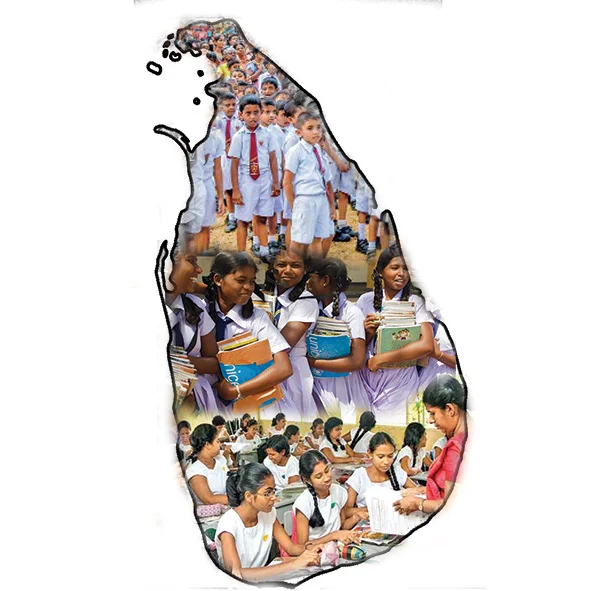
Sri Lanka was once at an economically comparable level with some of the world’s most developed countries in the 19th century. However, despite our country’s potential, we are still striving to fully develop. Many people often blame politicians, government officers, or various sectors for the situation. However, I believe the root cause of these issues lies not in any individual or group, but in the lack of good attitudes within our society.
We are investing significant resources into our education system, which is funded by the taxes of hard- working citizens. However, when we examine the outcomes, we realise that the academic achievements of our graduates alone are not enough. There are instances where professionals, despite having the necessary qualifications, fail to uphold ethical standards. In some cases, this even results in malpractice or harmful actions that damage our country’s reputation and progress. This highlights the gap between academic success and real-world responsibilities.
The education system, which is currently focused on competitive exams and rote learning, does not emphasise the development of attitudes and character in students. While our students are academically capable, many lack the qualities required to contribute positively to society. This lack of focus on social values, such as patriotism, selflessness and respect for elders, is holding us back from achieving the level of progress we deserve.
To address these concerns, I wrote to His Excellency, the President of Sri Lanka, on 24th September 2024, proposing education reforms that emphasise not only academic qualifications but also attitudes, ethics, and social responsibility. I suggested a holistic approach to university admissions and government recruitment, incorporating moral integrity, character, and extracurricular involvement, key traits for fostering well- rounded, responsible citizens. More importantly, I strongly recommended introducing a compulsory school subject, with both theory and practical components, focused on attitude development, which would be evaluated in university admissions. Encouraging extracurricular participation alongside academics will help shape ethical and socially responsible individuals.
I am pleased to inform you that the President, recognising the importance of these reforms, has directed the relevant ministries (by a letter dated 24th October 2024) to explore integrating these ideas into the education system. This marks a crucial step in transforming the values and attitudes of our youth for the nation’s benefit.
However, meaningful change requires collective effort. Parents, teachers, students, and citizens all play a role in shaping Sri Lanka’s future. Together, we must instill responsibility, ethics, and patriotism in the next generation. I invite you to share your thoughts and suggestions on further enhancing the values and attitudes of our youth. Your feedback will be invaluable in building a brighter future for Sri Lanka, one driven not just by knowledge, but by integrity and character.
Dr. Mahesh Premarathna
Research Fellow, National Institute of Fundamental Studies, Sri Lanka Email: mahesh.pr@nifs.ac.lk
-

 Foreign News6 days ago
Foreign News6 days agoBuddhism’s holiest site erupts in protests over Hindu ‘control’ of shrine
-
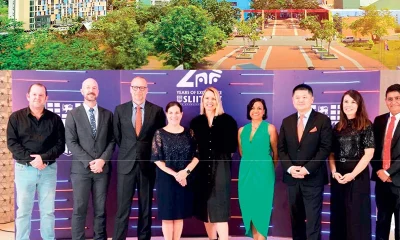
 Features5 days ago
Features5 days agoCelebrating 25 Years of Excellence: The Silver Jubilee of SLIIT – PART I
-

 Editorial7 days ago
Editorial7 days agoWhen tractors become cars!
-
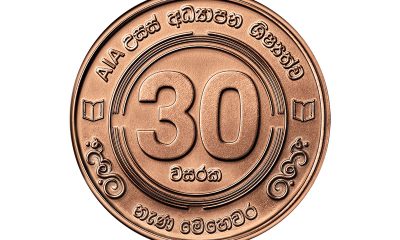
 Business3 days ago
Business3 days agoAIA Higher Education Scholarships Programme celebrating 30-year journey
-

 Business5 days ago
Business5 days agoCEB calls for proposals to develop two 50MW wind farm facilities in Mullikulam
-
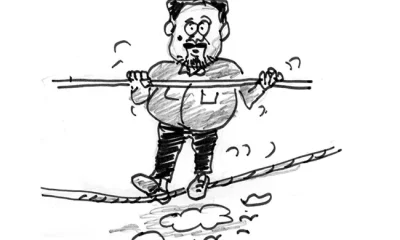
 Features5 days ago
Features5 days agoNotes from AKD’s Textbook
-

 Features7 days ago
Features7 days agoPolitics of Enforced Disappearances in Sri Lanka
-

 News2 days ago
News2 days agoGnanasara Thera urged to reveal masterminds behind Easter Sunday terror attacks











